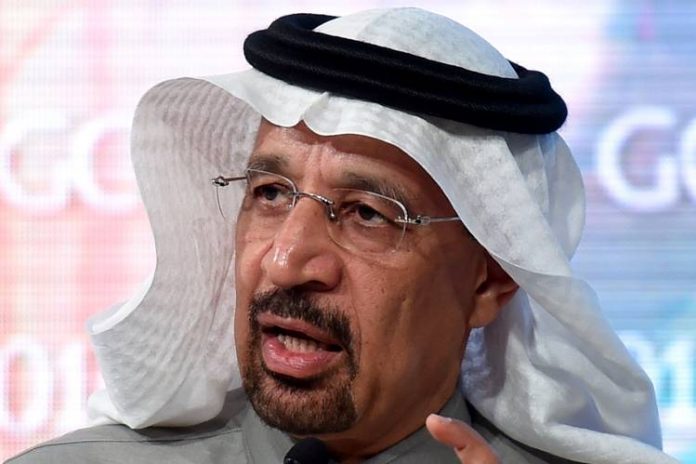Some experts watching the fluctuations in the prices of oil since the third quarter of this year had predicted a roll-back of the price of crude at the turn of the year. Now, they have been proved wrong.
Leaders of the Organisation of Petroleum Exporting Countries, OPEC, and non-OPEC members have ended crucial talks with an agreement to extend the production cut deal through the end of 2018. The Saudi Energy Minister, Mr. Khalid al-Falih made this known this week in Vienna, in a press conference at the end of the third OPEC and non-OPEC Ministerial meeting.
Mr. al-Falih, who is also the President of OPEC, said the ministers had also agreed that Nigeria and Libya should not produce more than their current production levels in 2018. He said that with the cut deal, the global oil market would continue to witness reduction of about 1.8 million barrels of oil supply daily.
The OPEC President explained, “There was a sharp global inventory build-up between mid-2014 and the start of 2016 as supply outpaced demand. By July 2016, the oil stock overhang reached 385 million barrels. We reviewed the report from the Joint Ministerial Monitoring Committee, JMMC, and discovered that there are some variables that determine supply from participating countries – we don’t expect uncertainties from some of our members. Our key metric, is to bring the inventory down to their normal levels, 150mb below the OECD level.”
The elated OPEC President went hyperbolical by declaring, “We learnt that low oil prices are equally damaging to the global economy just as the high oil prices. The concern is to ensure that investments are coming back to the industry due to the stability in the prices. We in Saudi Arabia, we are committed to ensure that the agreement is respected and achieve high level and compliance by members.”
For the Russian Energy Minister, Mr. Alexander Novak, the consensus that was reached to extend the cut because members were entering low oil demand season was very important. Mr. Novak said the move was necessary to reach a decision to ensure market stability. “We are still far away from reaching our goals, but we all spoke in favour of the extension till 2018,” he said.
According to oil watchers, this is the third time the two groups have reached agreement to cut production in order to ensure market rebalancing. As a result of the cut deal last year and the cooperation between the two groups, the prices of oil improved by nearly 20 per cent on average to reach 51.67 dollars per barrel on OPEC Reference Basket.
As usual, Saudi Arabia is expected to make the largest contribution by cutting its crude oil production by 486,000 barrels per day. Algeria is expected to continue to reduce its output per day by 50,000; Angola, 87,000; Ecuador, 26,000; Gabon, 9,000’; Iran, 90,000; Iraq, 210,000; Kuwait, 131,000; Qatar, 30,000; UAE, 139,000; and Venezuela by 95,000 barrels per day.
Non-OPEC producers would again continue to contribute a reduction of under 600,000 barrels per day. Analysts believe that one of OPEC’s biggest problems while cutting supplies has been the increasing US output, which is gaining global market share and undermining the group’s efforts to tighten the market.
But now, US oil production is experiencing problems. It hit a new record of 9.68 million barrels per day last week, which is up from 8.5 million bpd at the end of last year, before the cuts were implemented.
Analysts also predicted that US oil production will reach 9.9 million bpd by the end of the year, which would bring it close to top producers like Russia and Saudi Arabia.


















